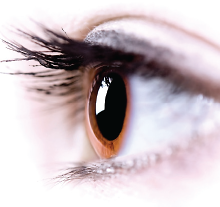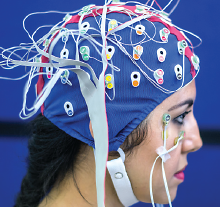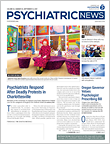ED-Initiated Buprenorphine Found Cost-Effective
Initiating buprenorphine when people with opioid use disorder present in the emergency department (ED) appears to be more cost effective than brief intervention with facilitated referral or referral alone, a study in the journal Addiction reports.
A team at Yale University compared the health care costs for people screening positive for opioid addiction over the 30 days following their ED admittance; the costs factored included ED care, inpatient/outpatient care, addiction treatment costs, and medications.
They calculated payment thresholds and found that ED-initiated buprenorphine with primary care follow-up was more cost-effective than either a facilitated referral to community-based treatment or a brief intervention and referral at all price points.
The average cost of ED-initiated buprenorphine over 30 days was about $1,752, compared with $1,805 for the intervention/referral and $1,977 for referral alone. Patients who were given ED-initiated buprenorphine used fewer illicit substances and were more likely to be enrolled in a treatment program 30 days after the ED visit.
Depression Alters Perception of Past Events
People tend to overestimate their ability to have predicted an outcome of past events—a phenomenon known as hindsight bias. A study published in Clinical Psychological Science shows that depression negatively influences hindsight bias, which may contribute to the negative feelings toward the present and future.
For the study, researchers at the University of Düsseldorf in Germany and the University of Portsmouth in England recruited 135 university students, about half of whom had mild to severe depression. The participants were asked to imagine themselves in a variety of everyday scenarios with positive or negative outcomes. For each scenario, the researchers asked the participants to assess how well they felt they predicted the outcome of the scenario, how much they felt that such an outcome was unavoidable, how much responsibility they felt for the outcome, and their mood once it was all finished. Some of the participants were also asked to rate their expectations before learning of the outcomes.
The results showed an emerging pattern of hindsight bias related to the severity of depression. Participants with more depression reported exaggerated foreseeability and inevitability of negative scenarios, as well as a tendency to misremember their initial expectations as more negative. “This memory hindsight bias was accompanied by disappointment, suggesting a relation to affect-regulatory malfunction,” the researchers wrote.
Pupil Size Could Serve As Biomarker for ADHD
Fluctuations in pupil size—which reflect changes in arousal and attention—may offer a promising biomarker for attention-deficit/hyperactivity disorder (ADHD), according to a study in Scientific Reports.
Researchers in Chile measured changes in pupil diameter in 28 children with ADHD and 22 controls who were given a visuospatial memory task. A subset of the participants with ADHD completed the task twice—once while taking methylphenidate and once while not—to assess the role of medication.
The researchers observed that when children with ADHD were not taking methylphenidate, their pupil diameter decreased more on average during the task compared with control children. This difference was not present when the children with ADHD were taking methylphenidate. The size of the pupils also correlated with reaction time and overall performance in the memory task among all the participants.
“Overall, the association between pupil diameter changes and ADHD behavioral performance markers, and how these associations differ between children with ADHD and children [without ADHD] suggests that pupil diameter changes during a visual-spatial working memory task may be a useful biological marker of ADHD,” the authors concluded.
Most Dementia Apps Lack Clear Privacy Guidelines
Most dementia apps targeting patients with dementia lack privacy policies, and those guidelines that do exist lack clarity, a team of researchers at Harvard Medical School has concluded.
The group reviewed 125 mobile apps that were related to dementia health and fitness. A total of 72 of these apps collected user data, but only 33 of those had an available privacy policy. Of these 33 apps, only 15 met criteria for being explicit, describing safeguards, and differentiating how the apps used individual and aggregate data.
Even policies that included details on how individual data were used often had missing information. For example, many policies failed to mention circumstances in which user data might be sold, whether IP addresses would be collected, or whether users could delete or amend their data once they were collected.
This lack of clarity and detail is especially concerning with regard to apps targeting dementia patients, as these individuals may lack the cognitive capacity to interpret the often convoluted and sometimes misleading legal language of privacy policies, the authors said.
The report was published in the American Journal of Geriatric Psychiatry.
EEG Neurofeedback Does Not Offer Extra Benefits to Adults With ADHD
Neurofeedback—a technique used to teach self-regulation of behaviors by showing people real-time displays of their brain activity—has shown some therapeutic value in children with attention-deficit/hyperactivity disorder (ADHD). A clinical study in Lancet Psychiatry found no evidence that this approach is more effective than group psychotherapy in adults with ADHD.
A team led by researchers at the University of Tübingen in Germany conducted a randomized, triple-arm study in which 118 participants aged 18 to 60 received either electroencephalographic (EEG) neurofeedback, a sham neurofeedback protocol, or group cognitive therapy for 15, 15, and 12 weeks, respectively.
All three groups demonstrated strong reductions in self-reported ADHD symptoms (measured with the Conners’ Adult ADHD Rating Scale) when assessed eight weeks into treatment and again at a six-month follow-up.
However, the researchers found no differences between any of the treatment groups, indicating that EEG neurofeedback does not confer any unique or extra benefits. ■





